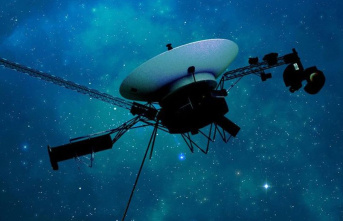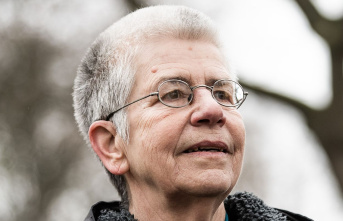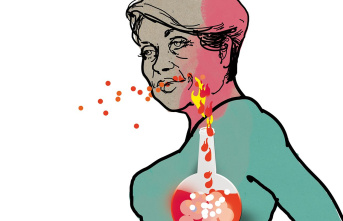In the future, the EU can send satellites into space from its own European territory. EU Commission President Ursula von der Leyen opened the space center in Esrange in northern Sweden together with Sweden's King Carl XVI. Gustaf and Prime Minister Ulf Kristersson a new launch site to complement the EU spaceport at Kourou in French Guiana in South America, which belongs to France. On the way to greater independence from Russia, great importance is attached to the complex near Kiruna.
"The current geopolitical situation - not least of course the Russian invasion of Ukraine - has demonstrated how important it is for the European Union to have access to space," said Kristersson at the inauguration. There, together with the king and the president of the commission, he symbolically cut a ribbon in the colors blue and yellow - appropriately, these are not only the national colors of Sweden, but also those of Ukraine.
"This is a great moment for Europe, a great moment for Europe's space industry," von der Leyen said. The spaceport offers independent European access to space and provides exactly the infrastructure that is needed.
She also pointed out the importance of satellites in monitoring climate change, among other things. The advantages of small satellites that can be launched from Esrange are immense. Small satellites are also important for security - among other things, Ukrainian forces use them to track the movements of Russian troops. For these and many other reasons, her Commission will present a proposal for an EU space strategy. "Europe has its foothold in space and will keep it," said von der Leyen.
Supplement for EU spaceport in French Guiana
According to the Swedish space company SSC, Esrange should offer a new access to space and thus complement the EU spaceport in French Guiana on the other side of the Atlantic. On the one hand, smaller satellites are to be launched from the sparsely populated and heavily forested northern Sweden, and on the other hand, reusable rockets are also to be tested there. So far, the space center, which was put into operation in 1966 and is located almost 40 kilometers east of Kiruna, has mainly been used for launching high-altitude research rockets and high-altitude balloons. The first satellite launch is now planned for the end of 2023.
However, Esrange cannot replace the starting place in South America. Due to its proximity to the equator, the latter is much better suited for sending heavy loads into equatorial or near-equatorial orbits. This is because the earth rotates fastest at the equator. Because of this, rockets gain momentum there when they launch eastward with the Earth's rotation. On the other hand, launch sites close to the poles such as the Swedish one are primarily suitable for satellite launches in polar orbits. From there, for example, good data for weather forecasts or for a better understanding of climate change can be collected.
"The European spaceport in Kourou in French Guiana will still be needed," said the Director General of the European Space Agency ESA, Josef Aschbacher, the German Press Agency. The location close to the equator is perfect for launching geostationary telecommunications satellites that use the earth's rotation to use less fuel.
The EU wants to make itself more independent from Russia
In Europe, Esa used the Russian Plesetsk rocket launch site for satellite launches in the past. From there, for example, the earth observation satellite Sentinel-3B was sent into space in 2018. With a view to the Russian war of aggression against Ukraine, however, the EU is trying to make itself more independent of Russia in many respects.
According to Aschbacher, Esrange Plessezk will not be able to replace him for the time being. "It's a different dimension," he said. Satellites formerly launched from Plesetsk would now be launched from Kourou.
Only around ten countries currently have the ability to launch satellites into space. Because of the benefits of everyday connectivity and the importance of information about how the planet is changing as a result of the climate crisis, SSC, as the operator of Esrange, expects that significantly more satellites will be needed in the future. According to the SSC, it is expected that the total number of satellites could reach 100,000 by 2040 - compared to around 5,000 operational satellites in space today.











